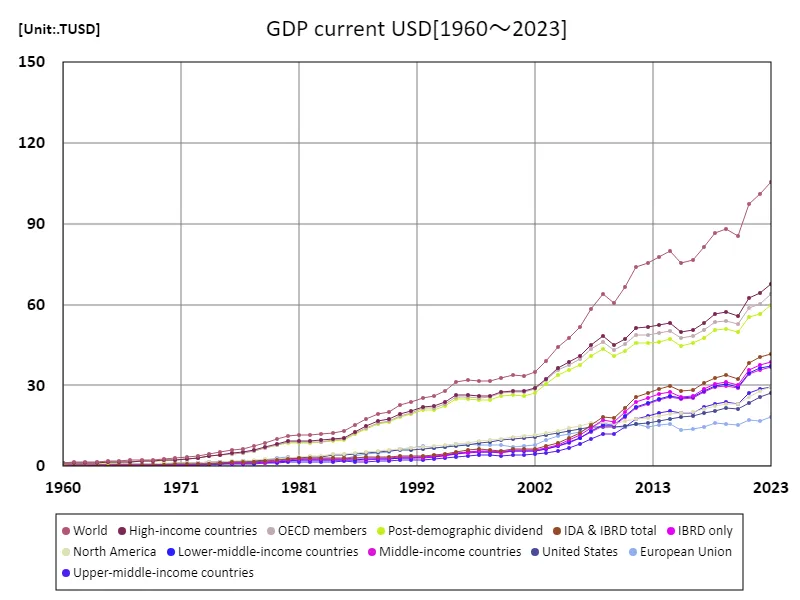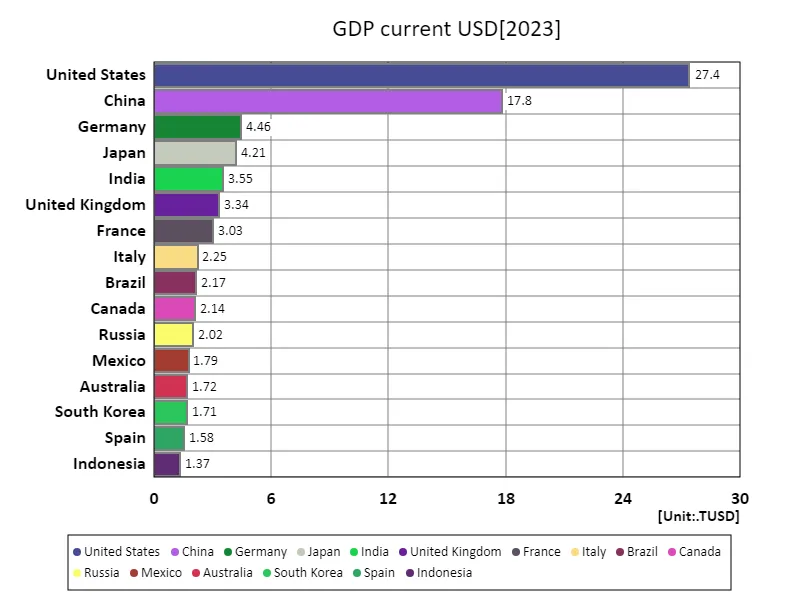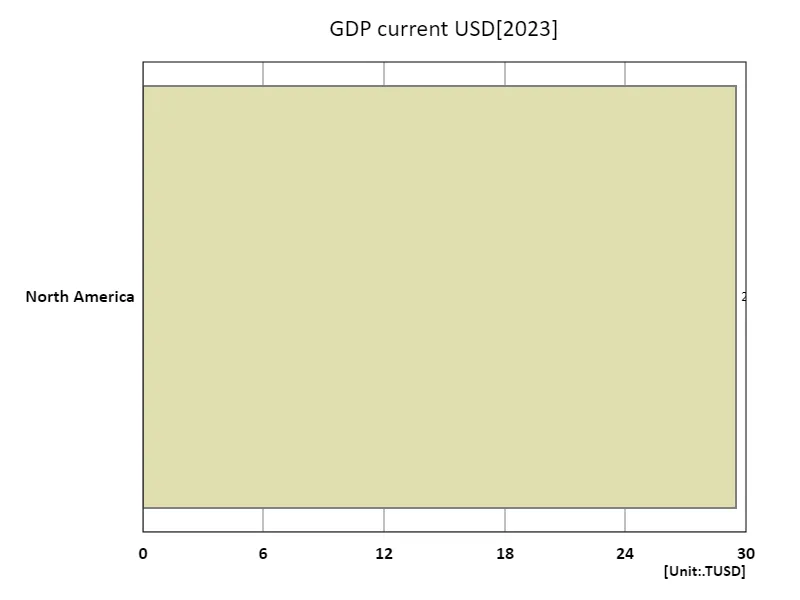Abstract
The world economy has seen significant growth, reaching a record-high GDP of 185 trillion USD in 2023. Over the past few decades, global GDP has consistently expanded, driven by rapid industrialization in emerging markets, technological advancements, and increasing globalization. Notably, GDP based on Purchasing Power Parity (PPP) often exceeds the nominal GDP in US dollars, reflecting the lower cost of living in many developing nations. Historically, the rise in global GDP has been marked by shifts in economic power, particularly the growth of China and India, which now play central roles in global economic dynamics.
GDP, US dollars
From 1990 to 2023, global GDP has experienced steady growth, reaching a peak of 185 trillion USD in 2023, marking a 100% comparison to the highest recorded level. Over these decades, the world economy has shifted toward services and technology, with emerging markets, particularly in Asia, driving much of the growth. While nominal GDP in US dollars highlights global economic size, GDP adjusted for Purchasing Power Parity (PPP) shows a more balanced global economic picture, emphasizing lower living costs in developing nations. This trend reflects the growing influence of China, India, and other developing economies on the global stage.


The maximum is the latest one, 105TUSD of World
GDP, US Dollars (Worldwide)
From 1990 to 2023, China’s economy has undergone remarkable transformation, reaching a record-high GDP of 34.6 trillion USD in 2023, marking 100% of its peak. This growth has been fueled by rapid industrialization, export-driven growth, and significant infrastructure development. China’s shift towards technology and services in recent years has further bolstered its economic standing. Adjusted for Purchasing Power Parity (PPP), China’s economic influence is even more pronounced, reflecting its role as a global manufacturing hub and major player in international trade, reshaping global economic dynamics.


The maximum is the latest one, 27.4TUSD of United States
GDP, US Dollars (World Countries, Latest Year)
In 2023, China reached a record GDP of 34.6 trillion USD, leading the world economy, with a global total of 180 trillion USD. This highlights China’s rise as a dominant economic power, driven by rapid industrialization, technological advancements, and export-driven growth. The average global GDP stood at 1.01 trillion USD, reflecting broad economic development across regions. Adjusted for Purchasing Power Parity (PPP), China’s economic influence remains significant, with its growing role in global trade, technology, and manufacturing reshaping the world’s economic landscape. The trends emphasize shifts towards a more multipolar global economy.


The maximum is 27.4TUSD of United States, the average is 577GUSD, and the total is 103TUSD
GDP, US dollars (region, latest year)
In 2023, East Asia and the Pacific led global economic output with a record GDP of 45.3 trillion USD, contributing significantly to the total world GDP of 205 trillion USD. This region’s dominance reflects robust growth driven by China’s economic power, technological innovation, and industrialization. With an average GDP of 13.6 trillion USD, the region shows a growing economic diversification, with emerging markets in Southeast Asia also making notable strides. Trends indicate a shift towards a more balanced, multipolar global economy, as East Asia’s economic influence continues to expand in trade, manufacturing, and services.


The maximum is 29.5TUSD of North America, the average is 29.5TUSD, and the total is 29.5TUSD


Comments